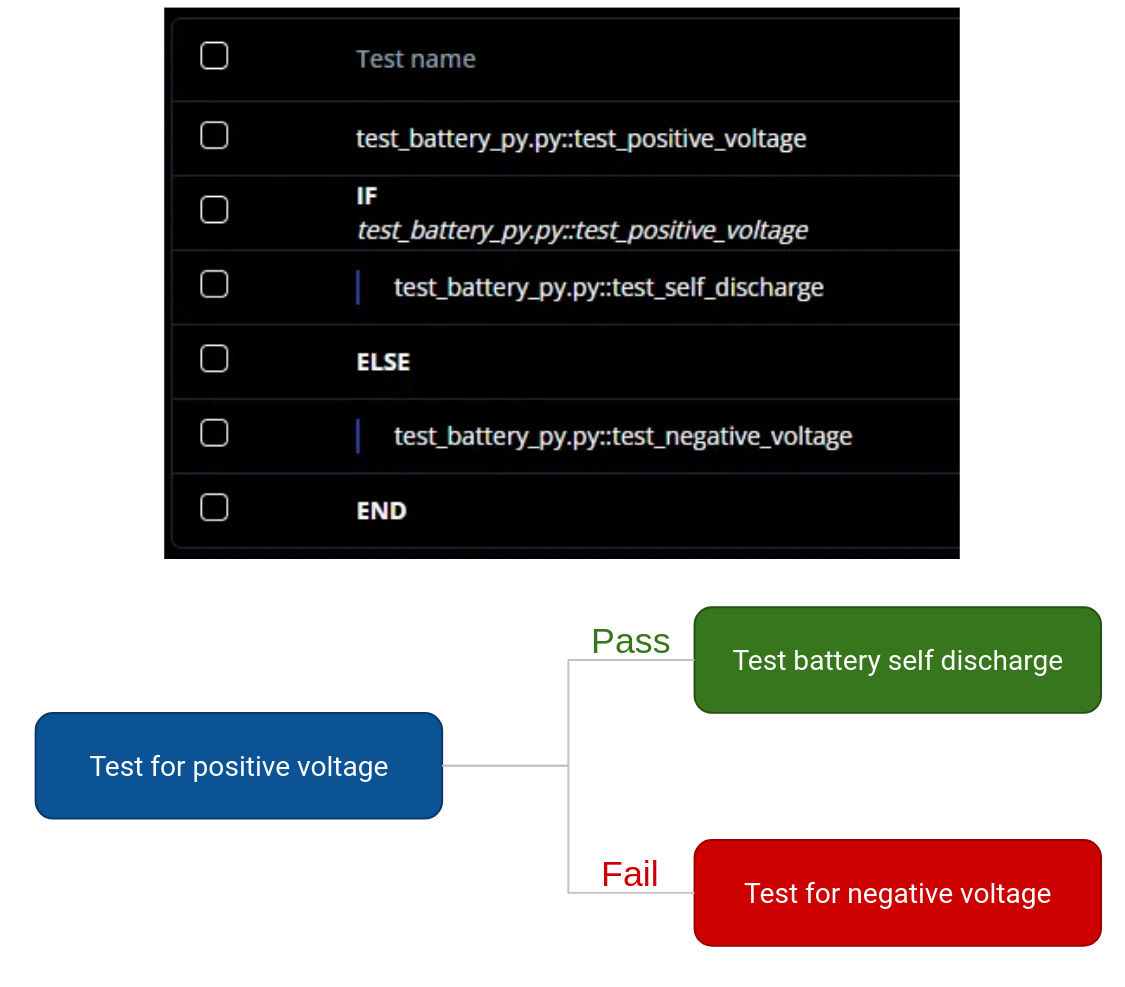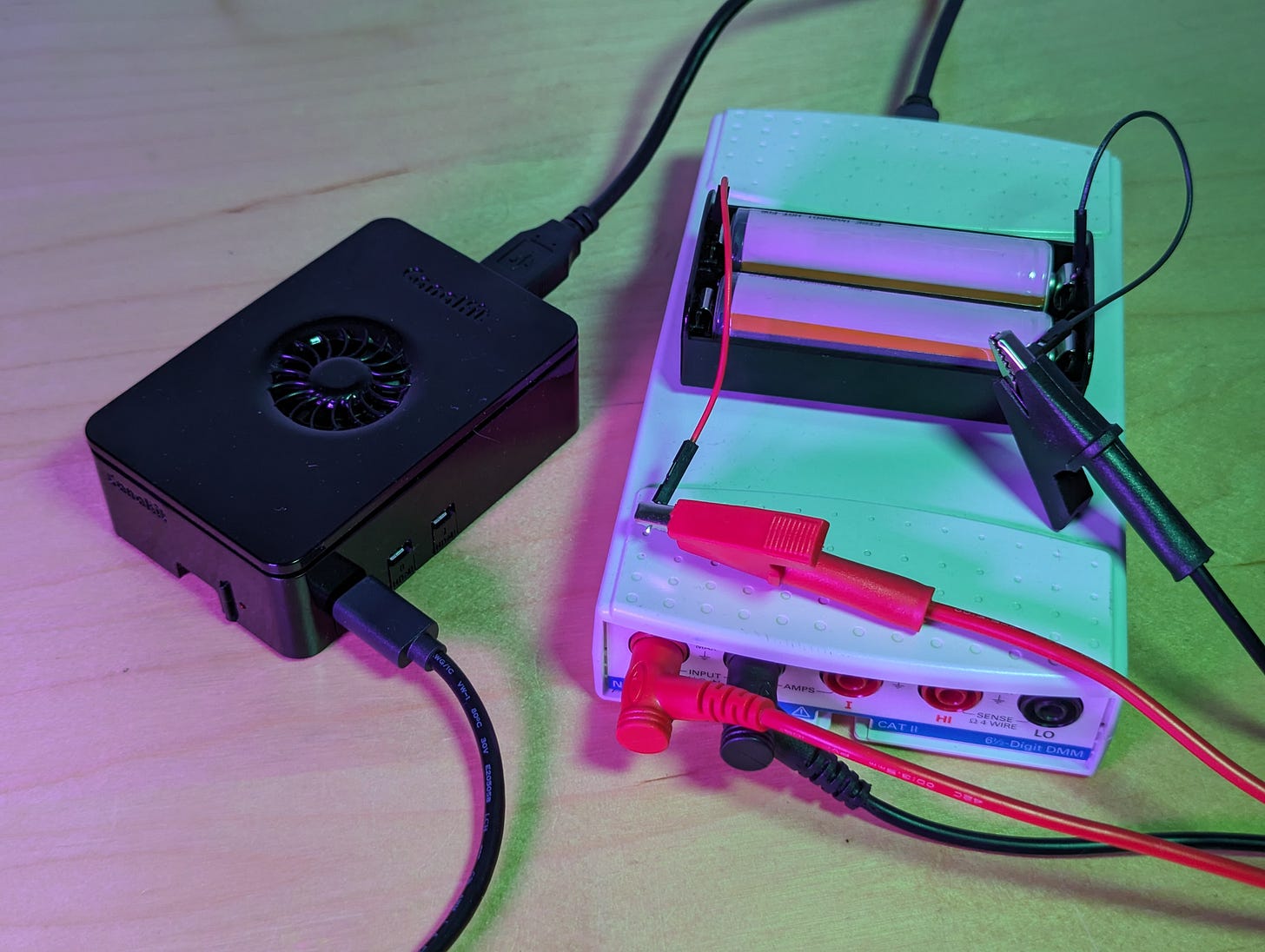Testing open circuit voltage with Flojoy's Test Sequencer
The open circuit voltage of a battery can be measured to estimate self-discharge rates of batteries - use Flojoy's sequencer and cloud to simplify battery testing and data storage.
This is the first in a series of posts on using Flojoy’s Test Sequencer and Cloud with batteries
Batteries, and battery testing
Lithium-ion batteries are one of the most common energy storage technologies. They are used in cell phones, electric vehicles (EVs), grid energy storage, etc. However, the high energy density and inclusion of some flammable materials requires a high amount of quality assurance and quality control. Testing the electrochemical and physical qualities of the batteries is an important aspect of this. We will focus on cylindrical cell type batteries for these tests as they are the most common form used in EVs.

Flojoy’s Test Sequencer
This product is designed to simplify testing of hardware such and circuit boards and batteries. See this post for an overview of the test sequencer.
Hardware
In this example, the hardware used is a 6.5 digit multimeter with a single 18650 lithium ion cell. A Raspberry Pi can be used to control the test sequencer (as well as Windows, Mac, or Linux PC systems). Here a single battery cell was tested, although a switch (Keithley 3700A for example) or a multi-channel relay controlled by a Raspberry Pi/Arduino could be used to test multiple batteries simultaneously. In high production settings, a commercial battery test system, such as a Keysight SL113XA, might be used for higher throughput. Part 2 of this series will include testing of multiple battery cells. Additionally, some tests are likely performed on the assembled high voltage modules.
The test sequence
The first tests performed is to ensure the battery is connected correctly. The test_positive_voltage test ensures that the voltage is positive and non-zero. An if-else statement is placed after this which, if test_positive_voltage fails, runs test_negative_voltage to test if the battery is connected in reverse. If the battery is connected correctly, the main test, test_self_discharge, is ran. The self-charge simply tests the open circuit voltage of the battery every minute for an extended period of time. In a battery production setting, this type of test could last days. A high quality battery will have almost no self-discharge.

Flojoy Cloud
Flojoy Cloud is a service that can work in concert with the Test Sequencer. It is designed to upload test result to the Cloud (hosted by Flojoy, AWS, or locally). Figure 4 shows the Cloud Panel and the Saved to Cloud indicator. Part 3 of this series will show how to utilize Cloud without Flojoy’s UI. Each piece of hardware (here, batteries) can have tests associated with them. The Cloud is structured as a: Workspace, Project, Hardware, Test, Measurement from “largest” to “smallest”.
As seen in Figure 1, a battery is made from many different parts. Flojoy Cloud allows for hardware to be made up of different hardware types. Figure 5 shows an example of a battery made up of a cathode, anode, and electrode. Each of these pieces can have they own Identifier (e.g. a serial number) as well as the battery having its own Identifier.
A measurement can be uploaded for each test performed. Once the measurement is uploaded it can be viewed at cloud.flojoy.ai. Figure 6 shows an upload of one of the self-discharge measurements. Over 20 minutes, the Li-ion battery showed no visible drop in OCV.
Please contact us if you require any help with the Test Sequencer or Flojoy.







